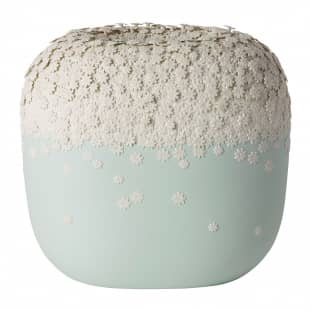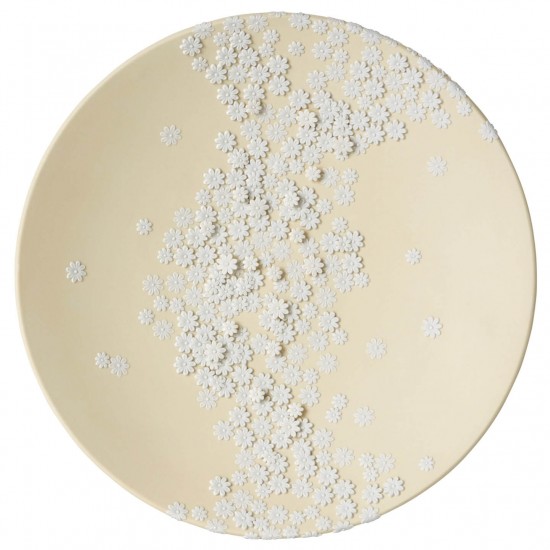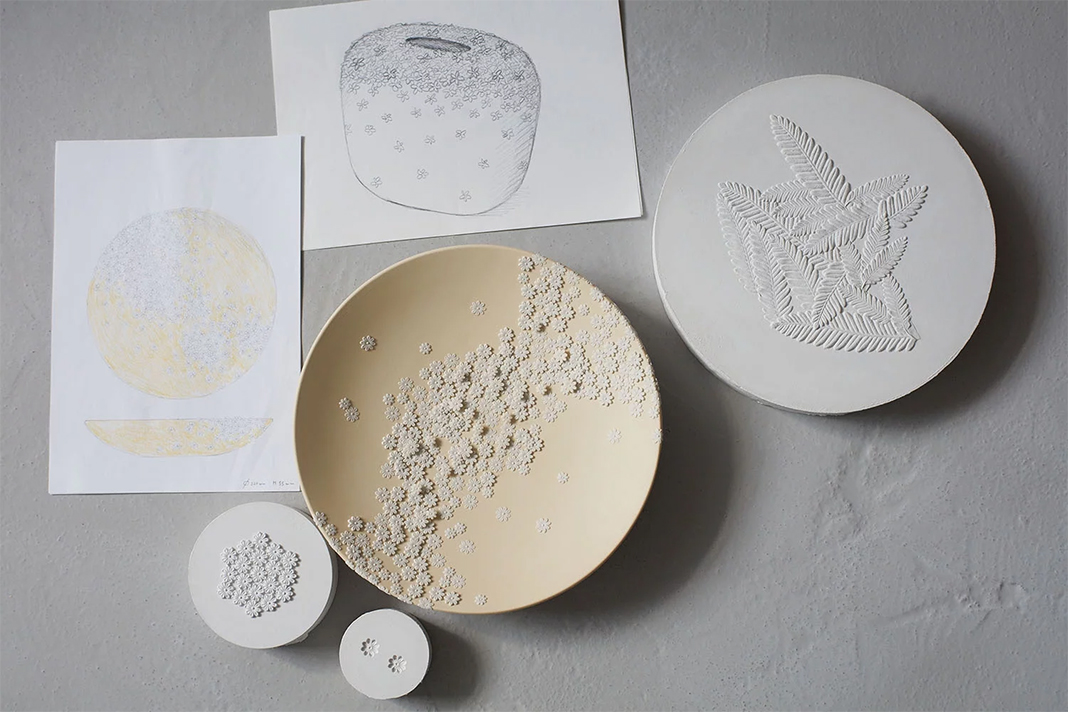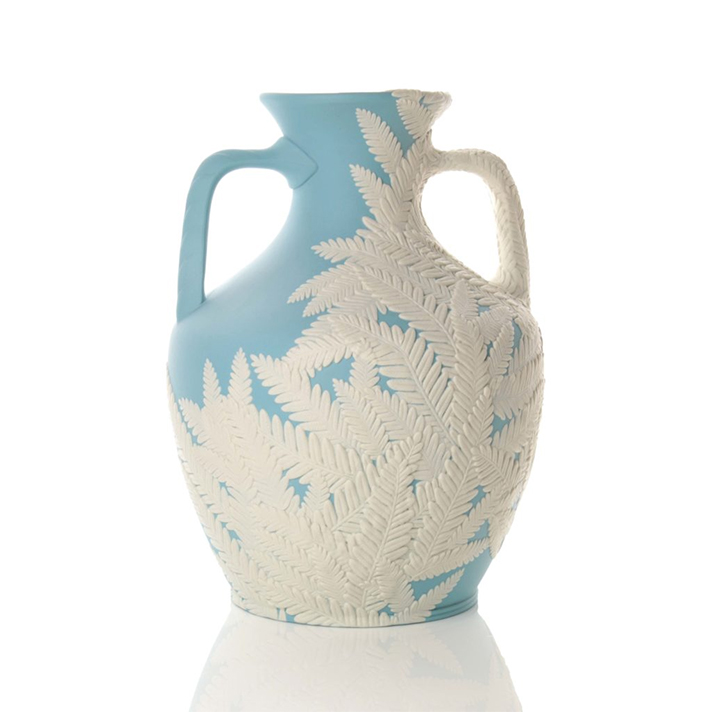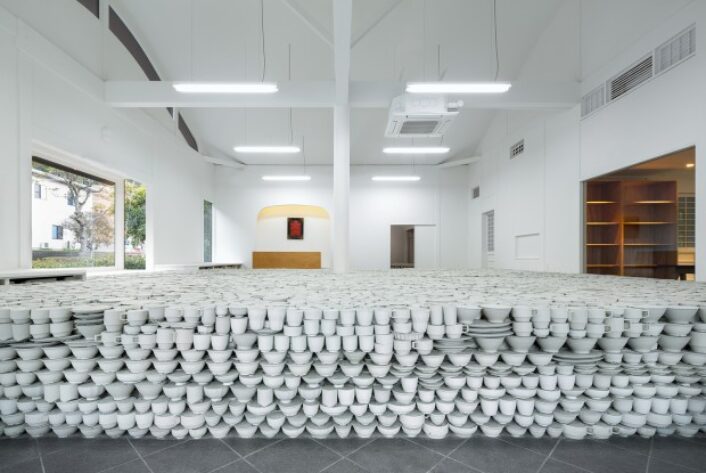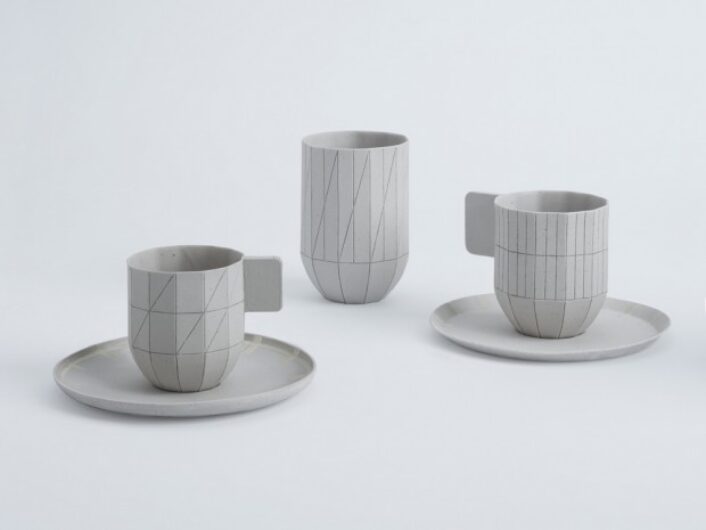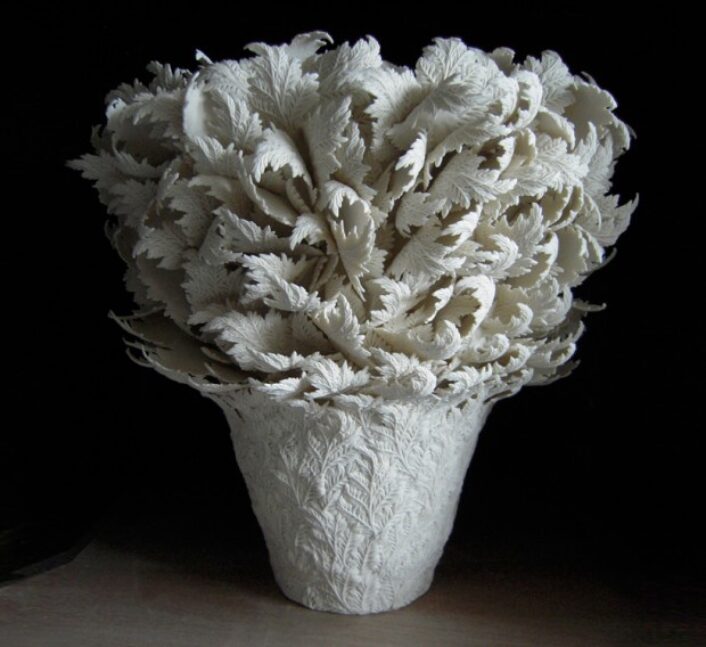A little background- last year, Wedgwood taped the very talented Hitomi Hosono as the first artist for their artist-in-residence program. Hosono has come full circle since she was an intern at the Staffordshire factory ten years ago. She learned so much; however, it was the delicate leaves and petals that left an impression on Hosono. These flowers centered her ceramic exploration for the next decade.
Global design director, Dik Delaney, said about the program, “The artisan program is about driving innovation back into the Wedgwood brand through pushing the creative boundaries of the painters and craftspeople at the factories.” Hosono’s vision follows that very premise. Her unique pieces incorporate the new techniques of raised ornamentation, intricate layering, and delicate carving. Sometimes, Hosono even pierces holes into the clay. These are all things that open the doors toward new methods which in turn elicit new creations.
